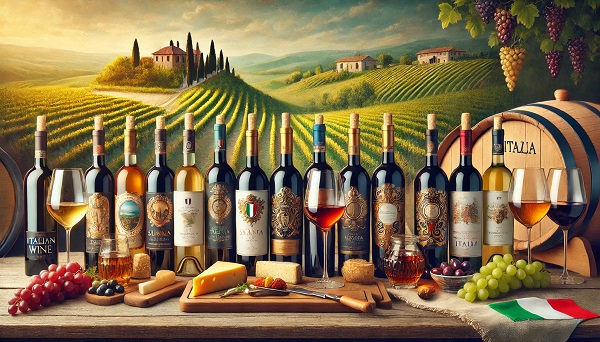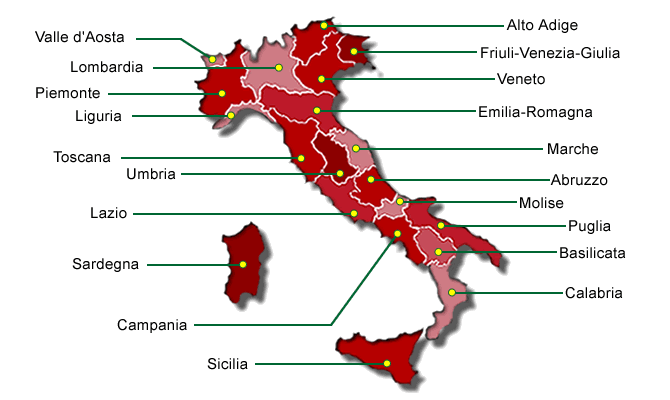Italian Wines

Italy is one of the largest and most famous wine producing country in the world.
Italian wines are renowned worldwide for their diversity, quality, and rich cultural history.
Italy is home to a vast array of grapes and wine regions, each offering its unique flavors and characteristics.
Italian Wines
Italian wines are celebrated not only for their exceptional taste but also for the close connection they have with the diverse Italian landscapes and culinary traditions.
Whether you're sipping a bold red from Tuscany or a sparkling wine from the Veneto, Italian wines offer a delightful journey through the country's rich viticultural tapestry.
Some of the most well-known Italian wines include:
- Chianti
Red wine from Toscana. Made from at least 70% Sangiovese grapes. Known for its robust and fruity character.
- Barolo and Barbaresco
Red wines from Piemonte. Made from Nebbiolo grapes. Complex flavors and a strong tannic structure.
- Brunello de Montalcino
Another Tuscan red wine made exclusively from Sangiovese grapes. Bold, full-bodied and an excellent aging potential.
- Amarone della Valpolicella
A unique red wine from Veneto. Made from dried grapes, resulting in a rich, full-bodied wine with a slightly sweet note.
- Prosecco
Sparkling wine from Veneto. Made from the Glera grape. Light, crisp, and fruity.
- Barbera d'Asti
Red wine from Piemonte. Made from Barbera grapes. Known for high acidity and versatility. Pairing well with a variety of dishes.
- Super Tuscans
Red wine from Toscana. Often made with a blend of traditional and international grape varieties. Gained fame in Tuscany for their innovative approach and high quality.

Italian Regions
Italy is divided into 20 wine regions.
With many thousand years of wine production history, each region has unique terroir, unique grapes and unique winemaking traditions.
- Toscana
Toscana is Italy's most famous wine regions. It is best known for its iconic red wine, Chianti, primarily made from Sangiovese grapes.
- Piemonte
Piemonte is best known for its prestigious red wines Barolo and Barbaresco made from Nebbiolo grapes. The region is also know the red Barbera wine and the white wines Asti (made from Moscato grapes).
- Veneto
Veneto is known for the famous sparkling wine Prosecco.
Other notable wines include Amarone della Valpolicella, a rich and full-bodied red wine made from dried grapes, and Soave, a dry white wine made from Garganega grapes.
- Sicily
Sicily produces a wide range of wines, from dry whites (Grillo and Carricante) to robust reds (Nero d'Avola and Frappato).
- Trentino-Alto Adige
Trentino produces a range of wines, including crisp white wines (Pinot Grigio) and elegant reds (Teroldego and Lagrein). The region is also known for its sparkling wine Trentodoc.